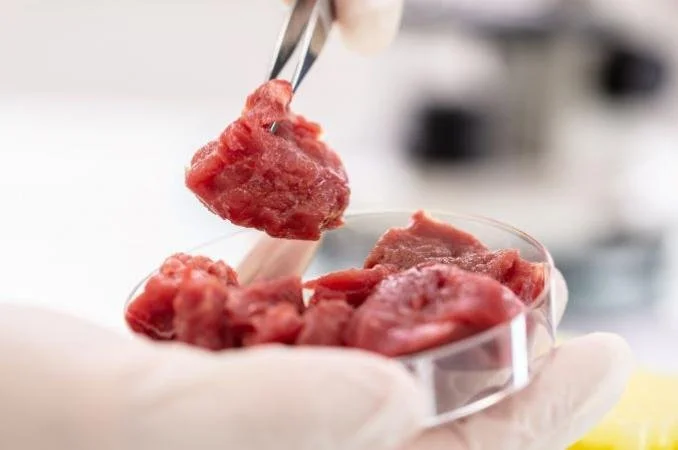Most of the global research around the nutritional, environmental and health impacts of producing and consuming red meat have been based on grain-finished cattle.
However, New Zealand specialises in free-range, grass-fed farming without antibiotics and hormones. Not only are the farming styles different, but so too is our pasture-raised meat.
Researchers, scientists, dietitians and nutritionists from AgResearch, the Riddet Institute and the University of Auckland recognised that difference and have undertaken a ground-breaking new research programme that compared pasture-raised beef and lamb against grain-finished and protein alternatives – products like plant-based alternatives.
The research has been broken down into four key stages.
STAGE ONE COMPLETED: NOV 2019 - NOV 2020
The first compared the nutritional makeup of pasture-raised beef, grain-finished beef, and meat alternatives. Led by Dr Emma Bermingham of AgResearch, this first stage of the research looked in detail at lipids (fats), diverse metabolic compounds and key minerals. In essence, this first stage looked at the nutritional composition, or the building blocks that make up beef and lamb and plant-based alternatives.
STAGE TWO: NOV 2019 - OCT 2022
Led by Drs Mike Boland and Lovedeep Kaur of the Riddet Institute, the second stage explored how the human digestion system responds to the different foods in stage one and how their nutrients are then absorbed by the body.
STAGE THREE: FEB 2020 - JUNE 2022
The impact of eating a meal with red meat compared with a vegetarian meal was measured in the third stage – the first time a trial of this type had been run. Headed up by researchers from the University of Auckland led by Dr Andrea Braakhuis, an Academic Director and Research Dietitian, a group of healthy, young (20-34 years old) men ate a series of four single meals over a period of several weeks, that contained either pasture-rasied beef, grain-finished beef, pasture-raised lamb or a vegetarian alternative, in a blinded investigation. Repeated blood samples were collected following each meal so that things like fatty acids, amino acid profiles, neurotransmitters, minerals, inflammatory markers and biomarkers of general health could be measured to assess the effects of the meal.
STAGE FOUR: NOV 2020 - FEB 2023
Finally, in the fourth stage, the impact of eating red meat or vegetarian diets over a sustained period were observed to investigate the health consequences of eating New Zealand pasture-raised red meat compared with a meat-free diet – again, the first time a trial of this type has been conducted.
80 people were monitored for 10 weeks, with a particular focus on the physical effects on the body from eating different foods. Other psychological elements such as satisfaction, sleep and stress levels were also monitored.
WHAT WE HAVE FOUND OUT
-
Alongside traditional analytical methods which determine what components make up the meat and meat alternative samples, researchers used newer advanced methods to compare the differing products.
These methods clearly showed there were differences between each of the cuts of meat and also major differences between meat and the alternative product.
What the animal eats influences the nutrients found in red meat, particularly the fats. For instance, pasture-raised meat contains more omega-3 polyunsaturated fat than grain-finished meat. Unsaturated fats are more beneficial for health than other fats.
Of the three cuts of beef investigated, pasture-raised, cooked tenderloin had the best nutrient and fat profile for health benefits; meaning it had the highest levels of long-chain omega-3 fatty acids (those greater than 20 carbons long), which we know are good for heart health.
The meat alternative is very different from meat; the product in this trial had less protein and more fat than cooked red meat. It did not contain any long-chain omega-3 fatty acids. The composition of the product reflects the ingredients it is made from.
-
Digestion is complex, but for the best health outcomes our food should be easily and completely broken down (or highly digestible), so it can be absorbed by the body.
Protein is made up of amino acids, and therefore when protein is broken down, the amino acids released are used by the body to build muscle and perform other essential functions. Significant amounts of undigested protein can change the microbiome in the gut and result in poor health outcomes.
Fat is broken down into fatty acids, some of which are good for health (e.g. long chain poly-unsaturated fatty acids) and others that are deemed not as good for health (long chain saturated fatty acids).
In laboratory simulators, the proteins in striploin and tenderloin were shown to be better digested than the meat alternative.
We think that the meat alternative was not well digested because it contains groups of proteins formed during its manufacture that resist digestion.
Digestion of meat from pasture-raised animals released greater levels of good fats relative to bad fats than those from grain-finished animals.
-
In November-December 2020, thirty men aged 20-34 years took part in the Stage 3 clinical trial. Each person on the trial was given breakfast on 4 different days and then their blood, digestive symptoms and mood were monitored for 4 hours after the meal. Breakfast was a burrito; on Day 1 the burrito included pasture-raised beef, on Day 2 grain-finished beef, on Day 3 lamb and on Day 4 the meat alternative.
The study was blinded – meaning the men did not know what type of burrito they were eating – but 9 out of 10 were able to tell if the burrito was made with the meat alternative, while only 1 out of 3 could tell whether they were eating lamb or beef.
The first scientific paper from stage 3 was published in the International Journal "Current Developments in Nutrition" in June 2022. Researchers have shown that the amino acids in red meat were more highly absorbed by the body than those from the alternative protein, making more of the protein available for essential functions in the body.
Researchers continue to analyse the findings from Stage 3 and will publish further results at a later date. You can view the amino acid results here.
-
From May 2021 through to June 2022, 80 people from 40 households completed the 10-week feeding study in Auckland. Half of the participants were fed a flexitarian diet (largely vegetarian with 3 serves of red meat per week) and the other half a vegetarian diet that included 3 servings of alternative protein per week. The trial was successfully completed over the Covid-19 pandemic in Auckland, no mean feat achieved by this dedicated research team.
A wealth of data has been recorded in the trial, including physical health measurements, food diaries and psychological scores. The research team have been working to analyse the data and have started to release results papers.
Click here to read about findings relating to satisfaction and adherence. Further papers will be published in 2024.
What we know about red meat already
We know red meat is a highly nutritious whole food, rich in protein and minerals and when included in a balanced diet, is a great way to ensure nutrient requirements are met. This ground-breaking new research programme seeks to explore the differences between grass-fed beef and lamb with grain fed beef and alternative proteins. The goal is to bring balance to what consumers are hearing.
Source: The Role of Red Meat in Healthy and Sustainable New Zealand Diets, March 2020
-
It also contains selenium, potassium, manganese, copper, magnesium and phosphorus. Zinc and iron are integral in brain development, fighting fatigue and supporting a healthy immune system.
-
Including taurine for brain and muscle function, carnitine for energy and creatine for muscle strength and performance.
-
This includes B vitamins, particularly vitamin B12 to support health and wellbeing, including growth and development.
-
These phospholipids are believed to have important roles in health.
-
Which is highly bioavailable, easily digested and contains all the essential amino acids in suitable balance.
-
Pasture-raised red meat contains omega 3 polyunsaturated fat, and has a favourable omega 6 : omega 3 ratio.
Featured Articles
Hear from the Researchers
This study is supported by Meat Industry Association Innovation Ltd (MIA Innovation) and jointly funded by Beef + Lamb New Zealand Ltd (B+LNZ), the High Value Nutrition National Science Challenge and New Zealand’s Ministry of Business, Innovation and Employment (MBIE) Research Partnership Fund.















